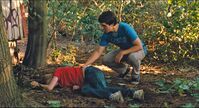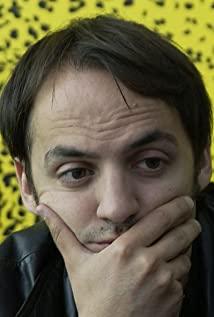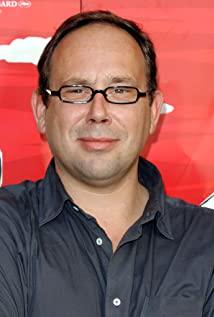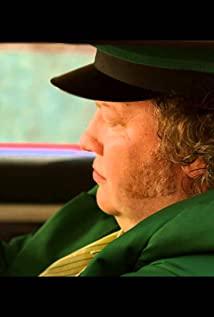The film portrays a tough, cunning but stubborn little boy who is undoubtedly unpleasant. From an adult's point of view, such children are difficult to discipline and constantly collide and resist the authority of adults. They are not even sympathetic to the kindness of those around them. They have extreme ways of expressing their emotions. on him. From various perspectives, the cyclist is definitely not a good boy in the traditional sense. But if you dig a little deeper, the audience can easily find that the stubbornness of the cyclist does not come from a real stubborn temperament, but is caused by being abandoned by his family, that is, his father. We don't know the reason for the absence of the boy's mother. The only thing we know is that the boy originally lived with his father and his grandmother, but due to the death of his grandmother, the boy's father felt unable to take up the task of raising the child alone, so he Abandoned him without knowing it. Knowing this, the audience has an emotional foothold and can empathize. In every film and television production, there will be a role that the audience can identify with and look at from its perspective, such as the vision in The Great Gatsby from the outsider Nick. This film hopes that the audience will start from the perspective of the barber Samantha, and let the audience start from the perspective of a woman's caring, so as to weaken the influence of the boy's bad behavior and make the boy three-dimensional and intelligible.
Since this film is mentioned, I hope to guide the audience to watch it from the perspective of a female carer. Then we can also see the difference between the images of men and women in the film. First of all, there are two conflicting trigger points in the whole film, and these two conflicts each account for half of the content of the film. The first half of the story revolves around the boy who insisted on escaping from the orphanage in order to find the trace of his father, in short, to find his father. This process was accomplished with the help of Samantha. But in this process Samantha is not accompanied all the time, or it is in this process that Samantha's appearance is introduced and the relationship between Samantha and the boy is built. Therefore, a large number of boys' perspectives are also covered in one paragraph, and the boy's behavioral logic is actually very simple, finding his father. In the process of finding his father, the boy took the initiative to ask many adults, but what is interesting is that there is a huge difference between the images of men and women.
The film begins with a conflict between the boy and the teacher. The male teacher ordered the boy to hang up. After the boy tried to escape, the two male teachers also dragged the boy down. In the process of inquiring about the father's information on the street, we also saw the indifference of the male neighbors, the male administrator, the male waiter, and the male motorcycle repairman. Their subconsciousness was to drive the boy away so that he would not bother them; on the contrary, women were more Human, the baker's auntie, the dorm aunt who wakes the boy up, the clinic's nurse and even Samantha, all in a friendly gesture. As for the strongest contrast in the film, it's the one between Samantha and the boy's father. The boy's father abandoned and cheated on the boy, and then did not come to the appointment during the meeting, avoided the boy, and even dared not tell the boy his true thoughts. The appearance of his father behind him highlights his self-interested side. Facing his son giving him money, he accepted it first, but then drove his son away on the grounds that he would go to jail for collecting the stolen money. He didn't even care about where his son stole money from and what happened. As a contrast, when faced with the boy's stubbornness and savagery, Samantha did not care about the hurt and loss she suffered, but comforted and cared for the boy, and appeared in a patient and gentle image. She also paid for it, paid others compensation, and lost her boyfriend. (The attitude of the boyfriend is also evidence of the male image of the film).
The conflict point in the second half of the film is that the drug dealer instigated the boy to steal money. The boy was moved by the drug dealer's initial friendliness and concern, and he even helped the drug dealer without asking for anything in return, instead of listening to Samantha's advice. The motivation for this behavior is actually to seek the "Father". I was rejected by my biological father before, and then I met an older drug dealer boy. I was attracted by the drug dealer's fake concern, and was even willing to give everything to get this little warmth, hoping that the drug dealer boy would occupy the image of a father in a certain sense. We also know in the end that when the plan doesn't work out, the drug dealer's complete profit-seeking, coercion, and abandonment of the boy makes the cyclist hurt again. Then the revenge by the bookstore owner and his son also completely showed the complete contempt and contempt for the male characters in this movie.
symbol
From the perspective of the different images of men and women, we can analyze the symbols in this film. The first is the bicycle. The film is called Bicycle Boy, and the boy has been riding a bicycle. It is obvious that the bicycle is the thread that runs through the whole film. But what does the bicycle symbolize? I think it should not only be viewed from the perspective of bicycles being the emotional sustenance or connection between children and their fathers. Rather, it should be viewed in a broader perspective. After all, the bike didn't appear in the movie in the first place. Samantha bought it for the boy after learning that he was looking for a bike. It is true that in the boy's opinion, bicycles represent his father's love for him, so he has an obsession with bicycles. Still, from the conversation, we know that it was his father who sold the bike, and that emotional connection was lost by his father. And Samantha bought the bike and gained the boy's trust through this act, and it was the bike that built their relationship. After getting the bicycle but not seeing his father, the bicycle was stolen several times, all because of the provocation and theft by the boy in the block. The boy was afraid of losing the bicycle. At this stage, the boy and Samantha have not yet fully established a good relationship, and for his father, he is also in a precarious relationship with both gains and losses. In the end, the boy took the initiative to apologize to Samantha after the incident, and a trusting relationship was formed here. After that, they rode together, and even the boy agreed to Samantha's proposal to change the bicycle, showing that he was completely sympathetic to Samantha. Open up and accept this emotion. Taken together, the bicycle should be a generalized emotional symbol for a boy, not just limited to his emotional connection with his father.
Next is up. At the beginning of the film, we see the boy being dragged from under the guardrail by two teachers; in the middle of the bridge, the boy is pulled down from a tree by his fellow drug dealers; at the end of the film, the cyclist is thrown down by a revengeful boy with a stone. We see that boys have a continuous upward trend, whether it is to overcome obstacles or barriers, it is always completed by an upward behavior. Ironically, men keep blocking. In contrast, Samantha lifted the boy up over the fence, and she helped the boy up with a supportive attitude from below. In Samantha's conversation with the boy, she mentioned that the drug dealers were constantly dragging the children around. It seems to feel that the boy is not always so savage and unreasonable, he also has a faint upward trend. We can understand this upward movement as “naturalization”—the tendency to return to family and social norms. And no doubt Samantha did. She lifted him over the wall, where the wall undoubtedly pointed to estrangement. She helped him find his father, drive away the estrangement, and help the boy to mature and socialize with love and care. As for three pull downs? For the first time, the instructor prevented him from stepping over a barrier, an act that prevented him from escaping and an authority-building process. But whatever the end, the boy still fled, and it was more direct and more intense. The second time, the drug dealer pulled him down, which obviously can be directly understood as the drug dealer lured him to commit a crime. The boy did indeed commit a crime by breaking up the good relationship he had just established with Samantha. The third time he was shot down by the revenge boy, he fell to the ground. This time, there may be several results in the end, one is his disability or death, and the other is his re-revenge. These are undoubtedly things we don't want to see, and they are also a kind of "downward". But in the end, the director cleverly used a phone call to wake up the fainted boy. It is conceivable who made the call. It was this phone call that made the boy avoid going down, wake him up, and let him face the hatred calmly and become a a more mature person.
Children's self-awareness and adults' repression
Almost half of the unpleasant presentation of boys in movies is caused by boys not listening to adults. We were surprised to find that the boy has a strong sense of independence and independence, and is not affected by the outside world. And all the boy's demands were realized under his tenacity. As mentioned above, there are two contradictions in the whole film, one is to find his father, and the other is to help drug dealers. As for the minor contradictions surrounding the two contradictory demands, they were all realized under obstruction. To answer the phone, go out of the jurisdiction of the orphanage and let him find his father. The boy achieved it by taking the initiative to ask Samantha to take care of him and his cunning; the next plot to help a drug dealer also showed the boy's flexibility and stubbornness, escaping the guardianship of adults. In general, in the movie, men show more aggression and physical contact when they challenge the authority of boys. Recall that the male teachers have several times of fighting and high-level education for boys. For women, it is a negotiated and relatively free attitude. Although there are obstacles, it is mainly based on negotiation. In the same way, when boys are hurt by men, adult men shout and use revenge; women endure it. As for the final direction (the boy successfully implemented everything he thought), the director seems to affirm the boy's strong sense of autonomy, resistance, and the positive role of women in guiding the boy.
Rebelling against father and pursuing mother?
The boy's defiance in the film is very interesting. The boy rebels but does not resist two dominant male characters, the father and the drug dealer. He even gained the favor of the two "fathers" in a way that was ingratiating - giving money and helping the crime. And he rebels against other men or adults who are blocking his pursuit of these two men. He is attached to the "patriarchy" but is abandoned by the patriarchal figures. From this dimension, what the boy resists is not the patriarchy.
There is a certain ambiguity as to whether the boy has an Oedipal complex and the confrontation between men. We know that the original Samantha had a boyfriend, but in the end her boyfriend broke up because Samantha couldn't bear the concern for the boy. In a scene from the film, the boy walks into Samantha's room with her boyfriend (both naked) in the middle of the night, and Samantha is startled. Samantha then went to the boy's room to comfort him. Obviously, the boy's behavior was to undermine Samantha's boyfriend's control, and he also showed his distrust and uncooperation with the adult male in some subsequent behaviors - not sitting with him. Similarly, his hostility towards peers and other men also exists. Here is the confrontation between equal males, which I don't think is contradictory to his attachment to the patriarchy, he happens to challenge these males, because here he does not recognize these male authority, because they are all in a competitive relationship . The snatch of bicycles and the snatch of women's comfort are both towards women and emotions, and these men's confrontation also comes from this.
From the film we see that the boy has no mother. Here, the image of the mother is replaced by Samantha as a contrast to the image of the father. One reason the boy's father abandoned the boy was the death of the boy's grandmother. Can we conclude that, for a long time, it was the grandmother who looked after the boy and his father? And drug dealers obviously have similar families, with only elderly people in the family, and their mothers are missing to some extent. And the lack is whether the result makes these men lack the ability to go up? Ironically, the patriarchal image that boys want to attach to is itself incomplete, and they themselves are immature and "boys" to some extent. They also abandon boys and cannot take on the responsibilities of a man. It's a paradox that they are looking for men and can't be real men because of the lack of women. In the end it all points to the female characters.
The female characters in this film are too perfect and too idealistic. She is both the anchor of the audience and the point of emotion; but she is also a mirror, reflecting the weaknesses and relationships of all the males in this film, and even more so From the perspective of gender, a weapon for bicycles and teenagers.
View more about The Kid with a Bike reviews











